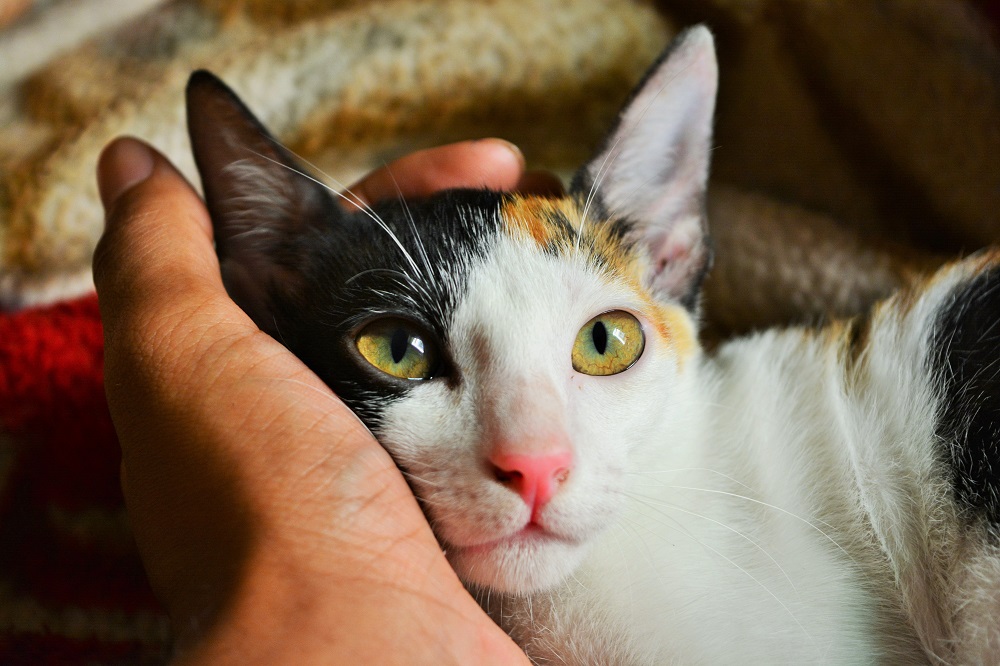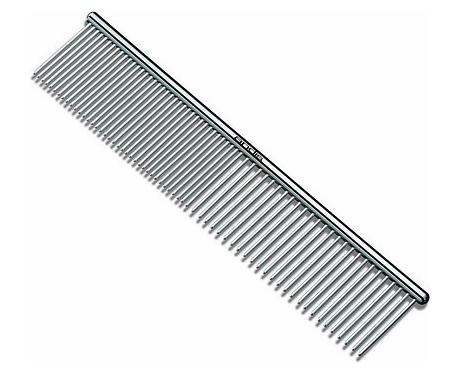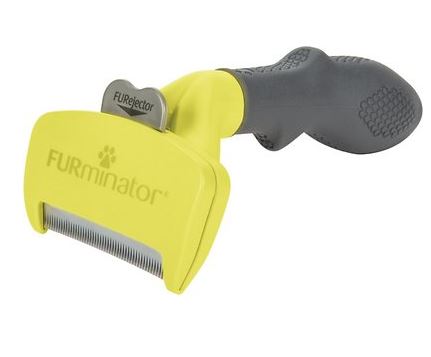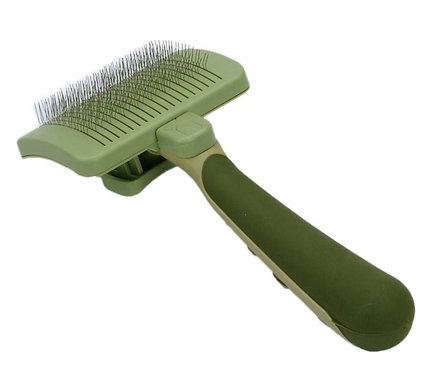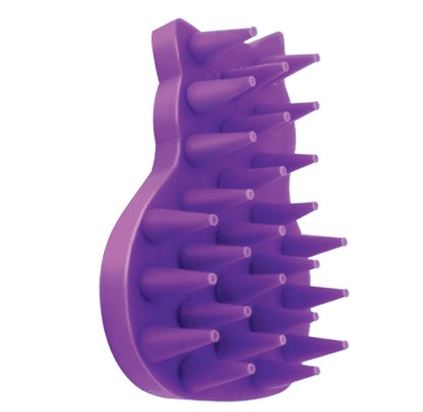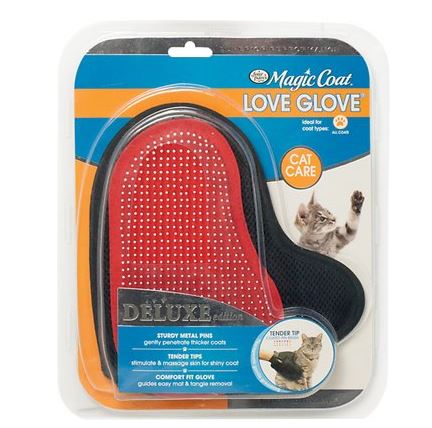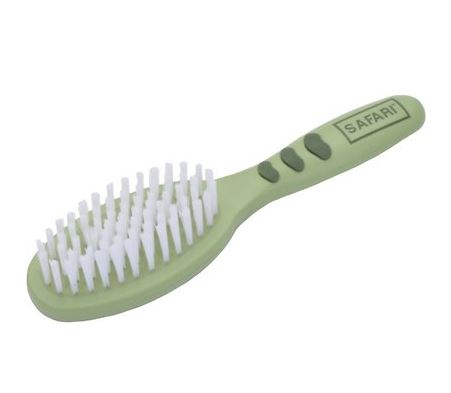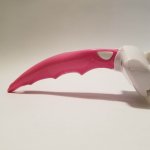What’s The Best Brush For Cats? 9 Best Cat Brushes
Last Updated on
June is here, and so is the cat hair. A lot of cat hair.
It’s full-on shedding season, and cat hair is everywhere.
It’s floating in the air, drifting across the floor, and landing in your food. Maybe people joke that “food tastes better with cat hair in it”, but seriously – do you REALLY like getting cat hair stuck in between your teeth?
Cats don’t like eating their own fur either.
Unfortunately, that’s exactly what happens they lick themselves. The average cat spends 30-50% of their time grooming, and during peak shedding season, they’ll inevitably ingest a lot of hair. Your cat won’t be able to shake off all of the fur from their tongue. This massive amount of swallowed hair has no place to go other than your cat’s digestive system.
The hair may pass through your cat’s body without causing any issues, but it doesn’t always go so smoothly. It may come back up as a hairball or it could cause a gastrointestinal blockage. Gastrointestinal blockages caused by hair are rare but are extremely serious and life-threatening when they do occur. Surgery to remove a hair blockage can range from $800-$4,000.
Signs of a gastrointestinal blockage include vomiting, lack of appetite, diarrhea, lethargy, abdominal tenderness, and constipation. A blockage is a serious issue, and it’s important to get help for your cat as soon as possible if these symptoms show up.
To prevent hairball formation, make sure your cat is getting enough moisture – feed a wet food. In addition to wet food, try adding an animal-sourced omega-3 supplement and increase your cat’s fiber intake. A teaspoon of pure, 100% pureed pumpkin is an easy way to add fiber to your cat’s meal.
Your cat’s shedding is both a problem for you and your cat.
That’s why it’s such a good idea to use a cat brush to remove excess fur.
This year, give the vacuum and your cat’s tongue a rest. Use a cat brush to groom your cat.
Brushing your cat is a great way to cut back on the constant shedding-cleaning cycle, and your cat will appreciate the reduction of hairballs. In addition to removing loose hair, brushing helps to distribute natural oils across your cat’s coat, increasing its natural luster. Many cats also enjoy being brushed and relish the massaging experience. It’s a fun way to spend a few minutes bonding with your cat. If your cat hates brushing, keep brushing sessions as brief as possible, and always give your cat a favorite treat immediately afterward so the experience remains positive.
How often should I brush my cat?
The frequency with which you brush your cat varies depending on your cat’s coat and skin condition. Most cats are already efficient groomers, and extra grooming can be limited to periods of excessive shedding. Once-daily grooming should be enough to curb the shedding.
If you have a long-haired cat whose hair mats, it’s a good idea to brush or comb their fur at least once a day year-round.
Types of cat brushes: which brush is right for your cat?
Cat brushes aren’t a one-size-fits-all deal. Every cat has a different coat that requires a certain type of care, and it’s important that you choose a brush, or two, that fulfill your cat’s needs. Here’s a summary of the different types of grooming brushes available and what they are used for.
Slicker brush
The slicker brush is one of the most popular types of cat brushes. Slicker brushes have thin wire bristles set at an angle to prevent you from scratching your cat’s skin. They are good for both short and long-haired cats and work to remove dirt and loose fur while distributing oils throughout the cat’s coat, leaving their fur smooth and shiny. A slicker brush can detangle gently matted hair, but trying to detangle a serious mat with a slicker brush could pull and damage your cat’s fur.
Some cat guardians are leery of slicker brushes because of the wire bristles’ potential to scratch their cat’s skin. If you use a slicker brush properly, your cat should be fine. Don’t use too much pressure while brushing your cat, and don’t use a slicker brush if your cat has damaged skin. The bristles can further irritate a cat who is suffering from a skin condition, such as mange and fleas, or has broken skin.
Ideal for: short and long-haired cats who need a little extra shine.
Comb
A traditional cat comb is made up of closely set metal teeth. The teeth are rounded so they’re gentle on your cat’s skin. If you’re looking for a grooming tool that works well for small tangles and smoothing, a simple comb is a good choice. You’ll also need a comb if you suspect that your cat has fleas. Flea combs help you to identify and remove fleas on your cat’s coat.
Ideal for: short and long-haired cats who need a little detangling or any cat with fleas.
Deshedding comb
Unlike a simple grooming comb, a deshedding comb goes deep into your cat’s coat and removes more of your cat’s undercoat than an ordinary comb. Deshedding combs will actually cut your cat’s fur and remove their undercoat. They are an excellent choice for summer grooming when your cat’s fur is everywhere and regular brushing isn’t helping to reduce shedding. When using a deshedding comb, it’s important that you don’t brush too roughly or too often, as too much use can thin out your cat’s hair. It’s a good idea to avoid using a deshedding tool in the winter when your cat could use as much of their hair as possible.
Ideal for: cats with thick undercoats, those who live in hot climates.
Self-cleaning brush
Self-cleaning brushes make it easy to dispose of your cat’s hair after grooming. Instead of manually pulling hair out from the bristles, self-cleaning brushes loosen hair from the brush at the push of a button or twist of the brush head. These brushes usually work to push the hair off of the bristles by retracting them into the brush. Self-cleaning brushes make it easy to collect your cat’s brushed off fur- is anyone considering have a sweater made of their cat’s hair?
Ideal for: cats with humans who don’t like touching loose cat hair.
Rubber brush
Rubber brushes are gentle on your cat’s skin. They are ideal for sensitive or damaged skin, or cats that hate to be brushed with traditional combs and brushes. Rubber brushes give your cat a soothing massage, and the rubber texture is great for removing loose fur and redistributing natural oils. A rubber brush shouldn’t be the only option for a longer haired cat who develops mats. Rubber brushes aren’t good at removing mats or detangling clumps of hair.
Ideal for: short-haired cats with damaged or sensitive skin.
Dematting comb
If your cat has developed serious mats which seem impossible to brush out, you need a dematting comb. It’s also a good idea to invest in a dematting comb if you just can’t seem to stop your cat from getting mats in their fur. A dematting comb actually has sharp surfaces which, using the proper technique, will cut into your cat’s undercoat while remaining gentle on their skin. It’s a great alternative to having your cat shaved, and worlds better than trying to cut out mats with scissors.
Ideal for: long-haired cats with matted fur.
Grooming mitt or glove
If your cat loves to be pet, why not combine your petting session with grooming? Grooming mitts slip onto your hand just like an oven mitt, and the palm is covered in tiny rubber nubs made for capturing loose hair. Grooming mitts and gloves are an excellent way to reduce your cat’s shedding in a way which both of you will enjoy. Many cats love being pet by these mitts. Grooming mitts are not made for detangling, though.
Ideal for: cats who like being pet, especially those who have short hair.
Soft bristle brush
Soft bristle brushes are good for short-haired cats who really don’t need to be groomed, or as a final step in the grooming of a long-haired cat. Soft bristle brushes will distribute your cat’s skin oils over their body, and the soft bristles may feel soothing, like a gentle pet. If your cat has just rolled in the dust, a soft bristle brush can help you to clean them up and get excess dust out of their fur.
Ideal for: short-haired cats who just need a little touch-up.
Pin brush
Pin brushes, like slicker brushes, have small wire bristles. They’re set apart by the large, sometimes rubber coated, rounded tips on the bristles. The bristles are also further apart from one another than on a slicker brush. Pin brushes aren’t meant to remove your cat’s undercoat, and aren’t great at detangling, but are a good choice when you want to quickly and gently brush your cat’s fur without any static buildup.
Ideal for: quickly grooming any cat.
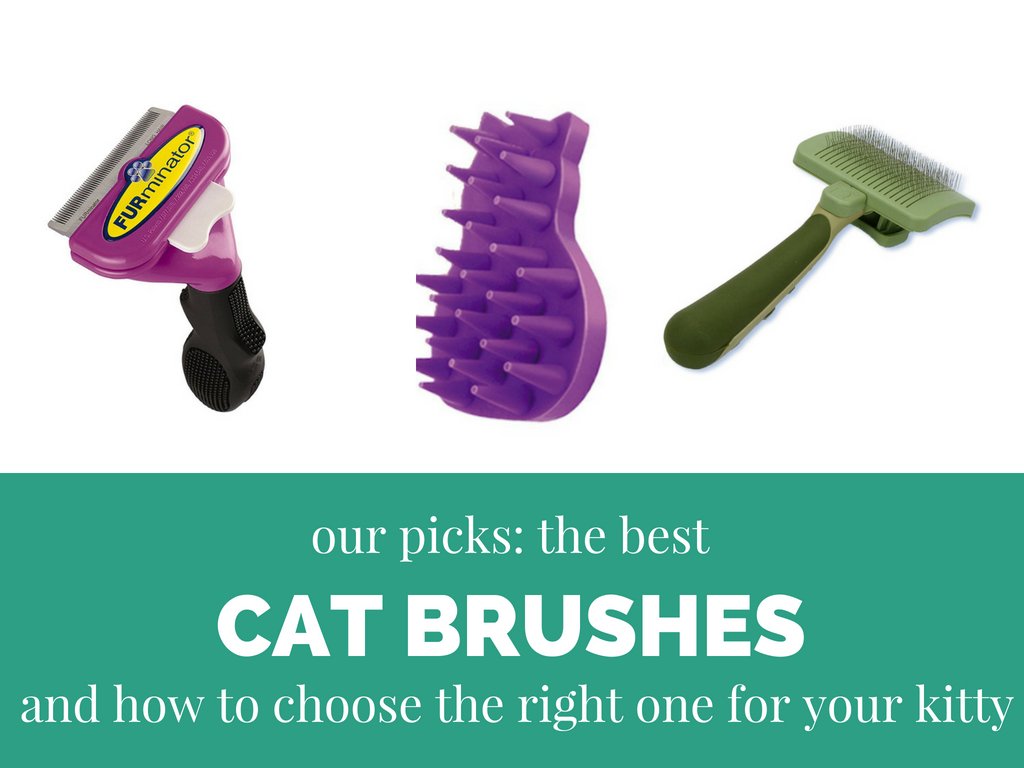
Best cat grooming brushes for each category:
We’ve selected some of the highest-rated cat grooming brushes for each category from Amazon.com.
Slicker brush: Glendan Dog & Cat Slicker Brush
The Glendan slicker brush is an all-around good choice – it’s affordable, simply designed, and does its job well. The brush is suitable for both short and long-haired cats. It features a 360° rotating head so it’s more comfortable to brush your cat. Customer reviewers agree that the brush works well to collect shedding hair and detangle mats. Some shared that even their usually brush-hating cats enjoyed being groomed with this slicker brush. The most common complaint about the brush is that it’s smaller than expected. The brush head measures 3.94″ across, and the brush is 6.4″ long.
Click the image to see the current price on Amazon:
Comb: Andis Steel Grooming Comb
The Andis steel grooming comb is a fantastic choice if you’re looking for an extremely simple grooming tool. The comb features both fine and coarse teeth. This comb works very well on long-haired cats to prevent mats. Reviewers say it’s gentle on their cats’ skin and leaves their fur smooth and soft. The comb is 7.5″ wide.
Click the image to see the current price on Chewy.com:
Deshedding comb: Furminator Deshedding Tool for Cats
The Furminator Deshedding Tool is famous for its effectivity at removing hair. The Furminator’s sharp edges work to remove the cat’s undercoat and reduce shedding, leaving you almost with a second cat. A cat made solely of fur. The Furminator does actually cut into your cat’s undercoat – and this has caused some debate in the cat community. Cat guardians are worried that they’re cutting into their cat’s protective coat. This is a reason for concern. A cat’s coat is important for their temperature regulation and skin health, and it’s a good idea to leave it as undamaged as possible. However, if the Furminator is used gently and in moderation, it can be a good tool to use on serious shedders.
Click the image to see the current price on Chewy.com:
Self-cleaning brush: Safari Cat Self-cleaning Slicker Brush
The Safari Cat Self-cleaning Slicker Brush makes cleaning the fur out of your cat’s brush incredibly easy. The gentle stainless steel bristles retract into the brush head, allowing you to easily dispose of collected hair. Reviewers say their cats love this brush, and it works well to remove and collect hair. Some customers complain that the bristles become misaligned over time and bend.
Click the image to see the current price on Chewy.com:
Rubber brush: KONG ZoomGroom Cat Brush
The KONG ZoomGroom cat brush is known for its awesome cat shape- and gentle and effective grooming, of course. The large rubber nubs remove a lot of excess cat hair, and cats enjoy the massage. Reviewers say the brush works well and some cats enjoy playing with the brush as a toy. One complaint is that fur does not collect in the brush, and collects near the base of their cat’s tail instead.
Click the image to see the current price on Chewy.com:
Dematting comb: GoPets Dematting Comb
If your cat has a serious mat problem, the GoPets dematting comb can help. Be aware that this comb does not work to detangle mats, instead, it cuts through the matted fur and removes mats. The curved edges allow you to come in close to your cat’s skin without hurting them. Reviewers attest to the efficacy of this dematting comb, saying it works quickly and is easy on the cats.
Click the image to see the current price on Amazon:
Grooming mitt: Four Paws Magic Coat Love Glove
Does your cat love being pet, but doesn’t like being brushed with a traditional brush or comb? Try combining the two – according to customer reviews, many cats who hate brushing love the Four Paws Magic Coat Love Glove: a rubber nub covered mitt. The mitt effectively removes and collects fur. Reviewers say that while the mitt is excellent for short-haired cats, it doesn’t have the grooming power necessary for a long-haired cat.
Click the image to see the current price on Chewy.com:
Soft bristle brush: Safari Soft Bristle Brush for Cats
The Safari Soft Bristle Brush works well for sensitive or senior cats. Since the soft bristles don’t penetrate below the outer layer of fur, this brush isn’t to be used as a solitary grooming tool on a long-haired cat. The soft bristle brush is a good choice if you just want to smooth your cat’s fur or remove dandruff. Many reviewers say their cats enjoy the brush because it’s gentle, like petting.
Click the image to see the current price on Chewy.com:
Pin brush: Boshel 2 in 1 Pin Brush
The Boshel 2 in 1 Pin Brush features rounded pins for quick, static-free grooming. It’s sturdy and the pins are gentle on cats’ skin. The Boshel Pin Brush is set apart from the crowd by its 2 in 1 feature: on the backside of the brush head, there is a nubby rubber covering which works to remove hair from clothes and furniture. Customer reviews say the brush works quickly to remove loose fur and attest to the power of the hair removal feature.
Click the image to see the current price on Amazon:
What is your favorite grooming brush?
How do you keep your cat’s crazy summer shedding in check? We’d love to hear what brushes you use to groom your cat. Did your favorite tool make our list?

